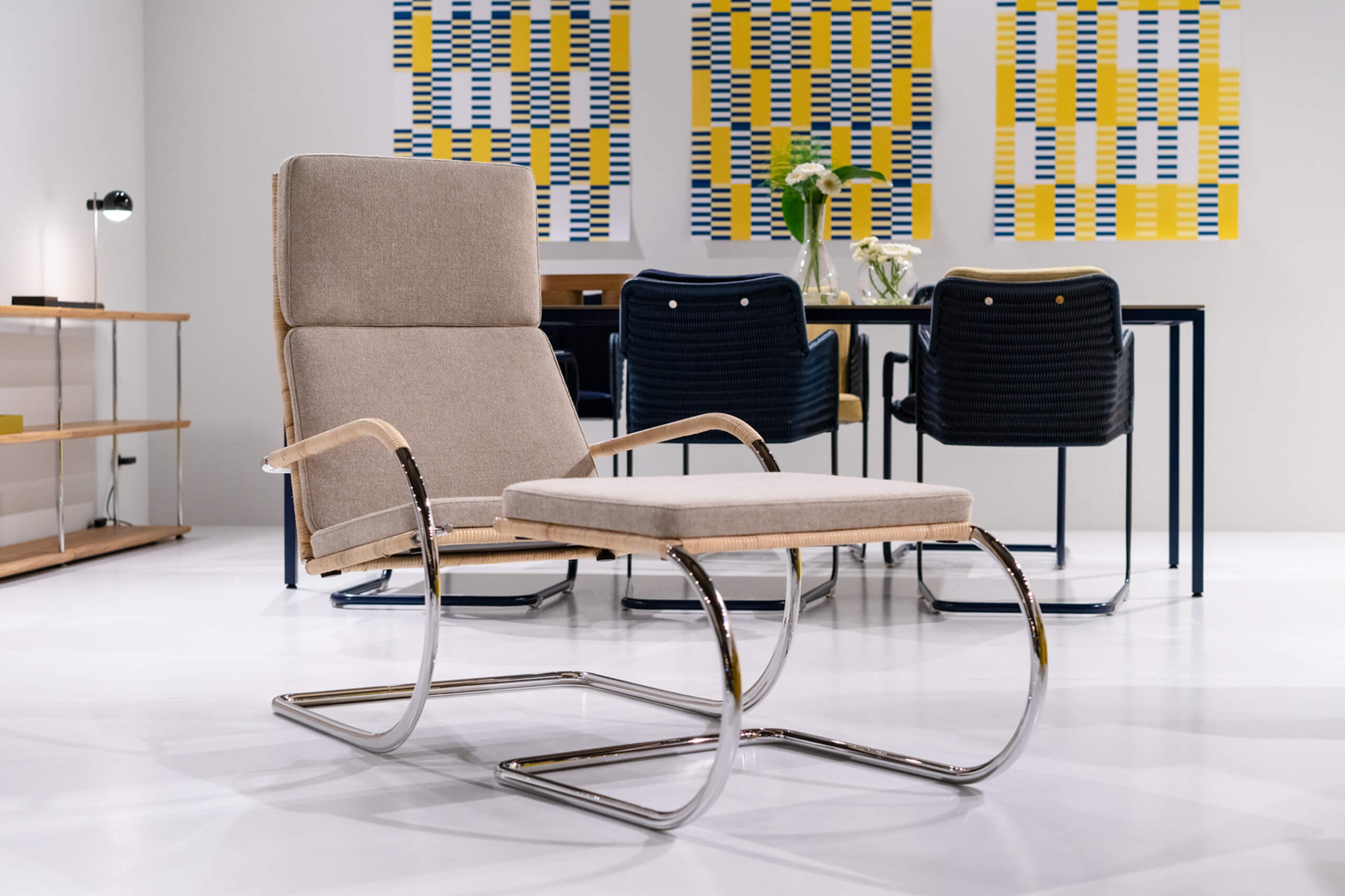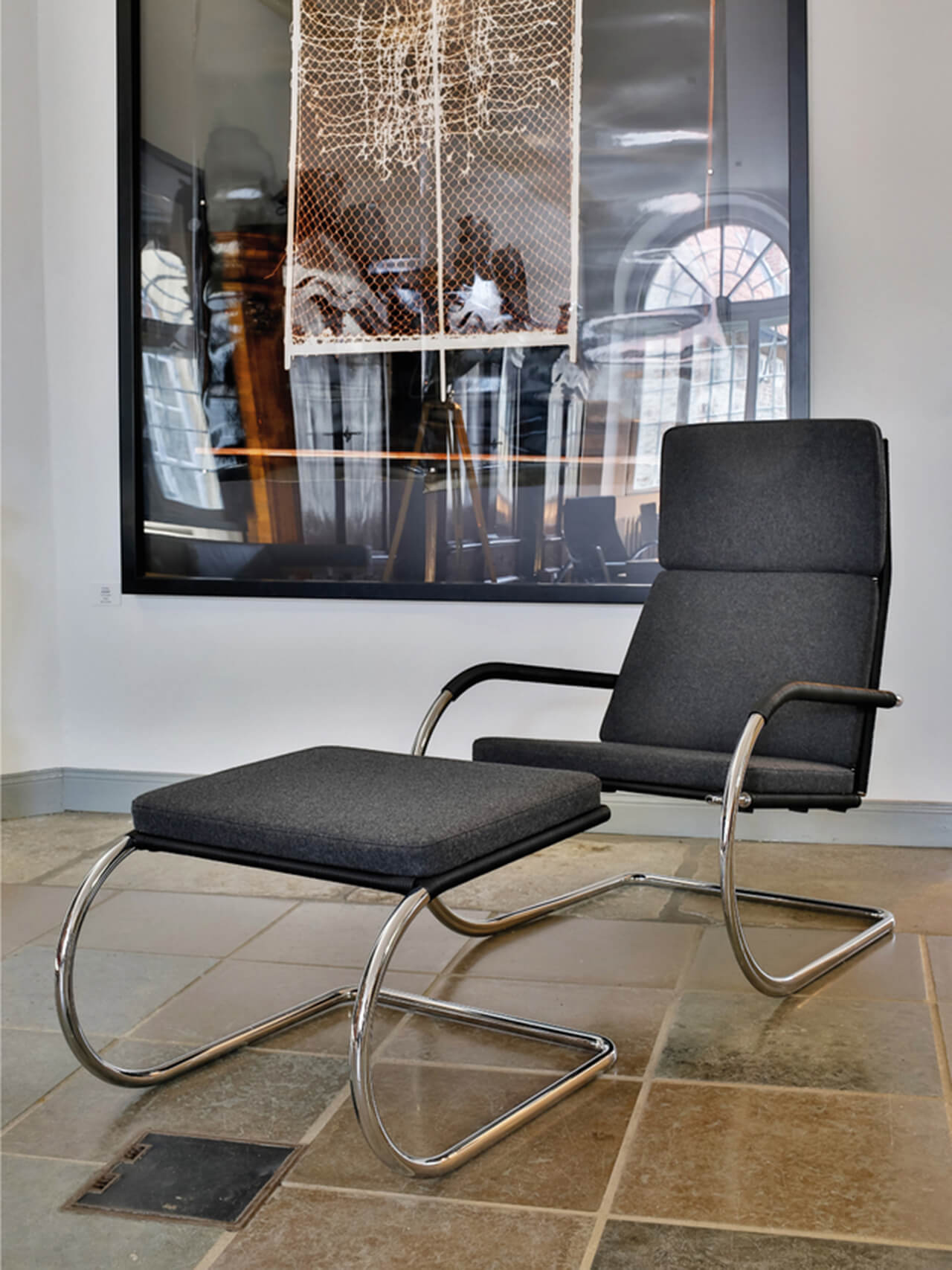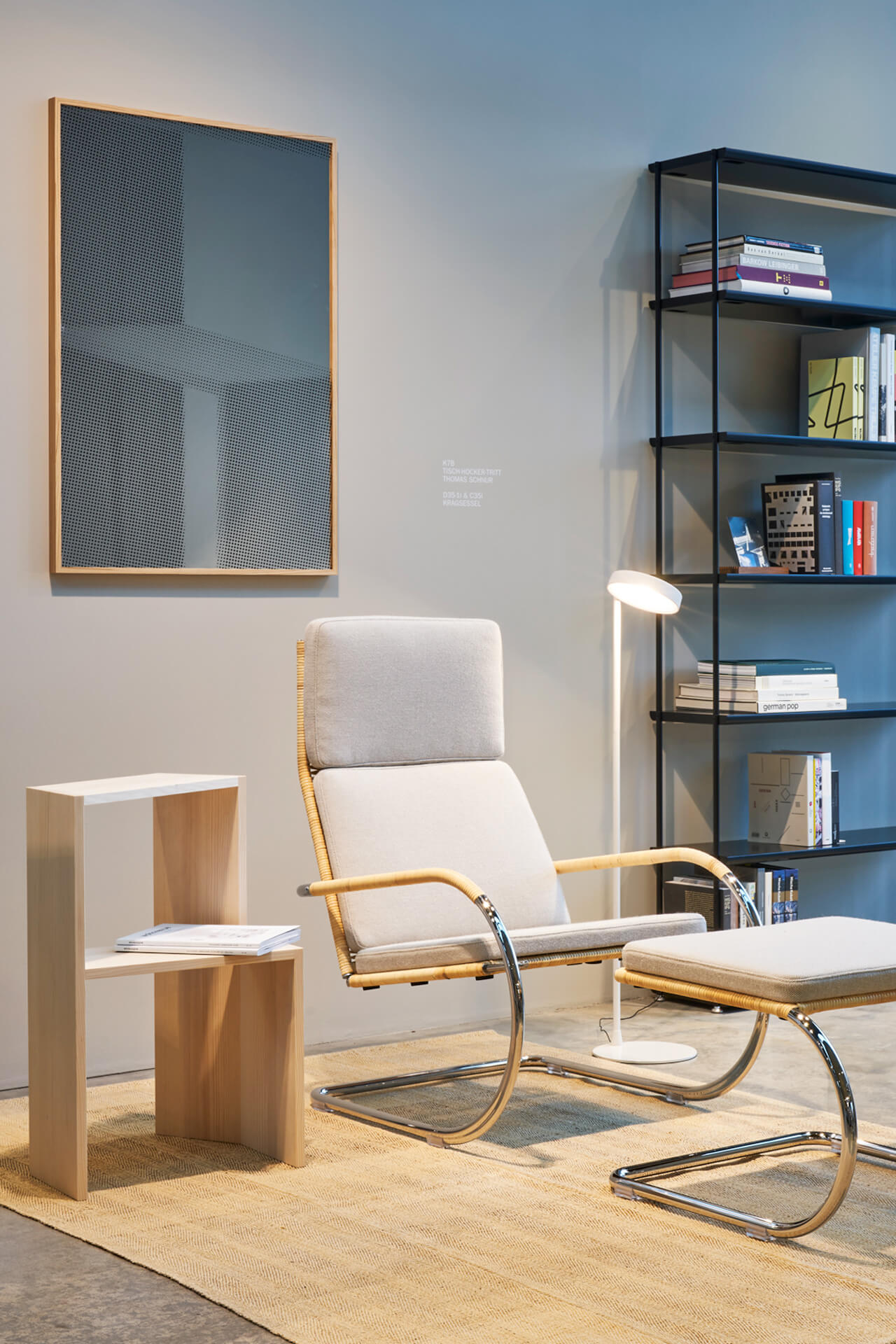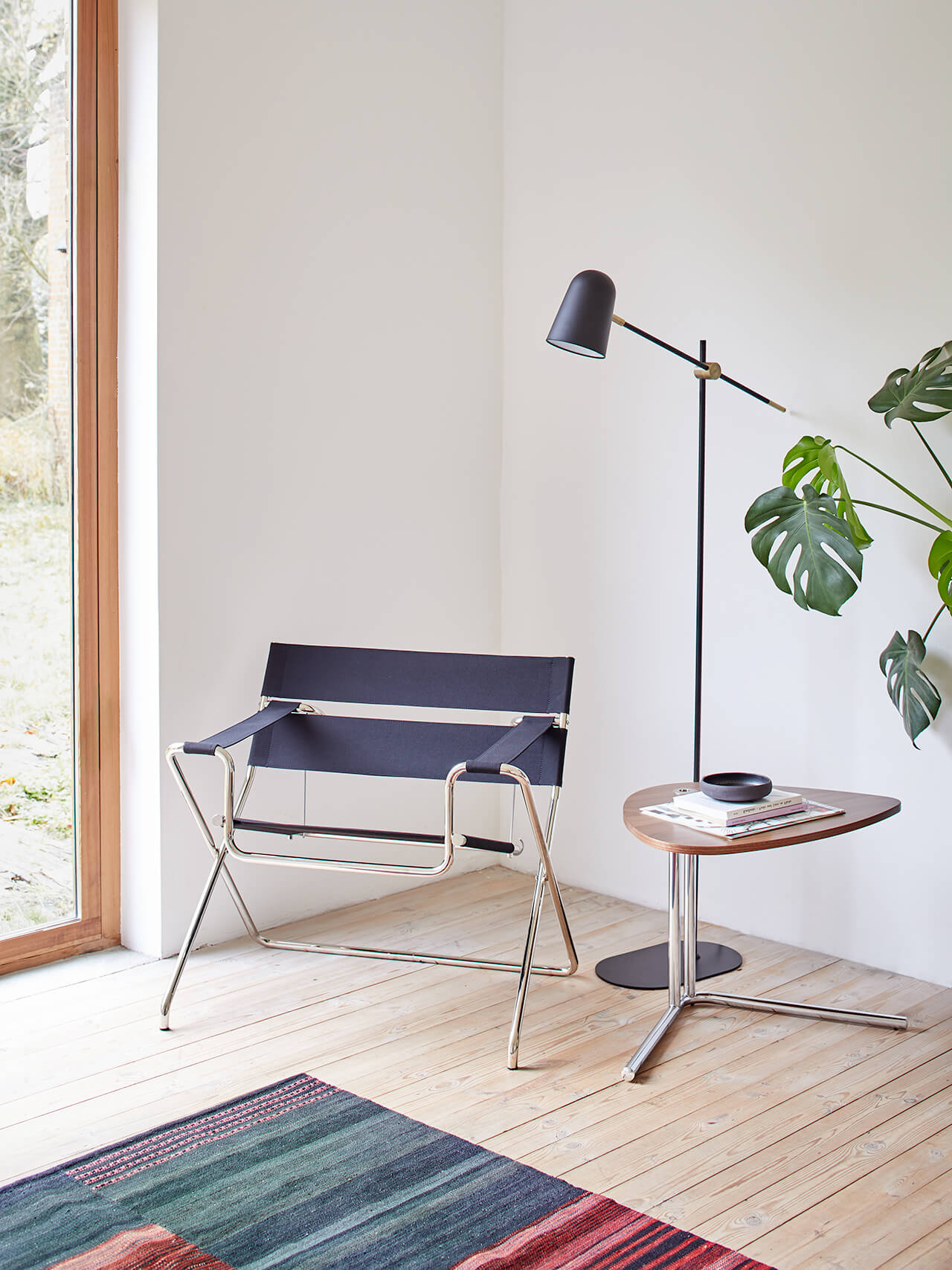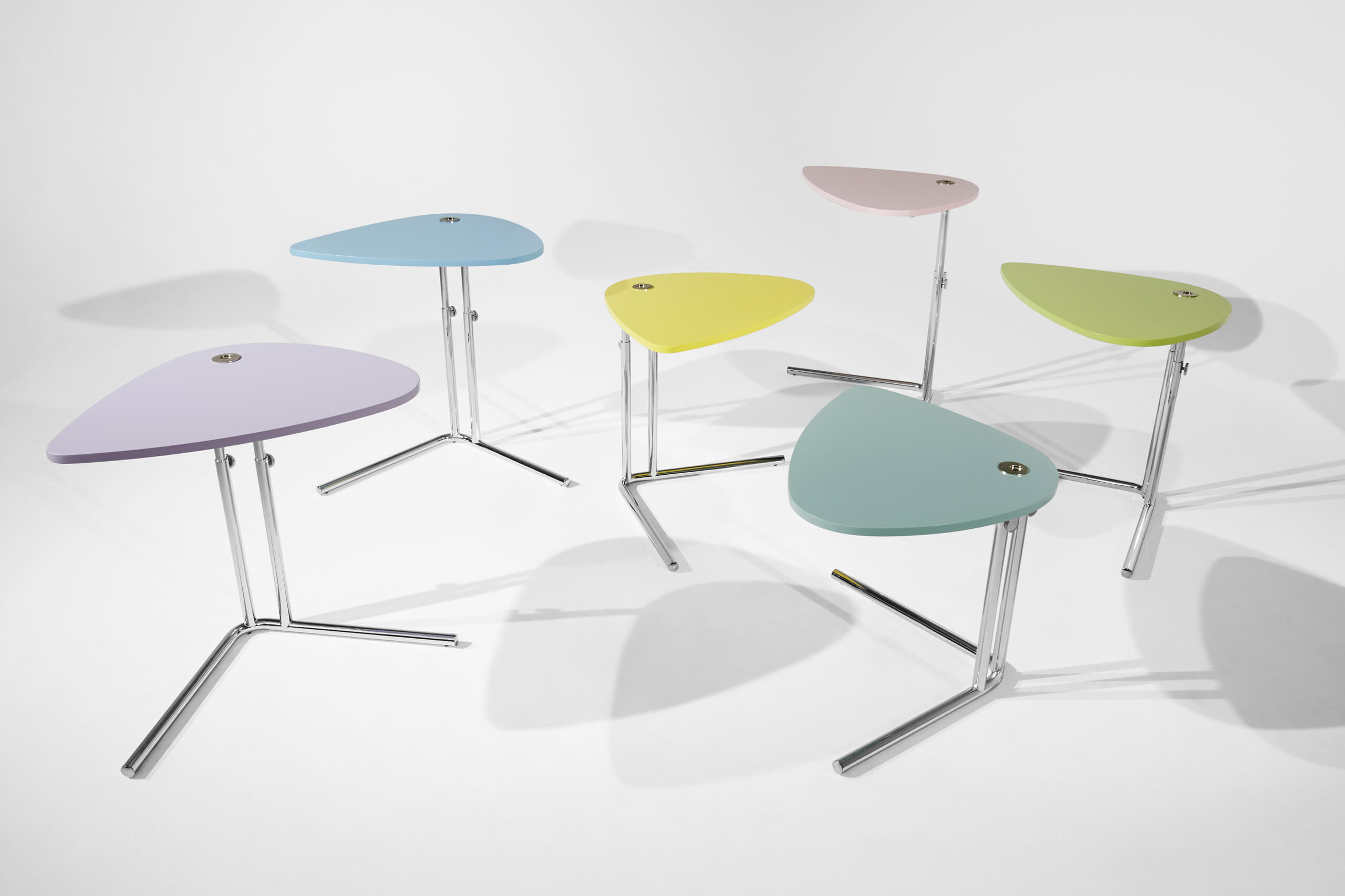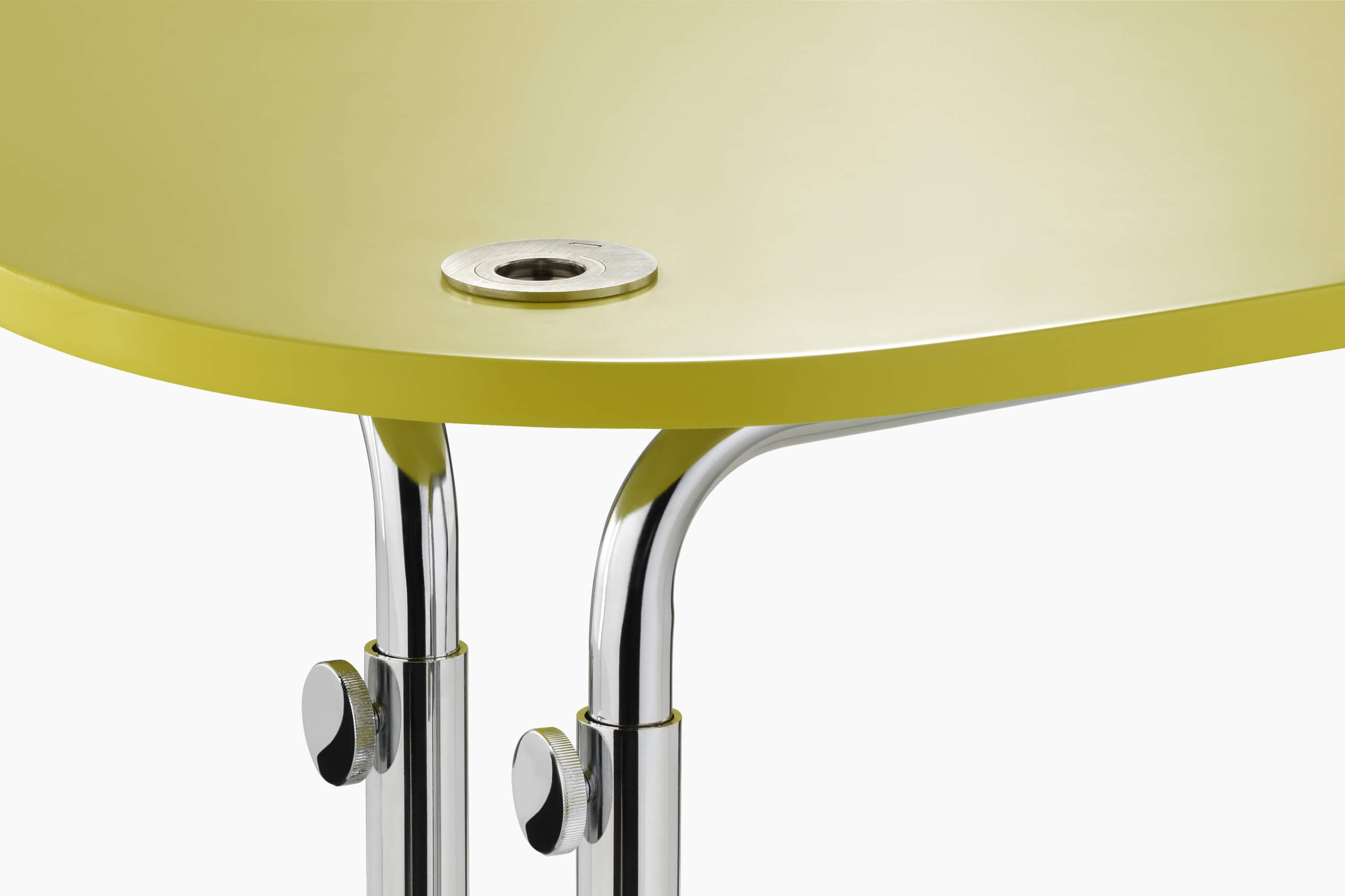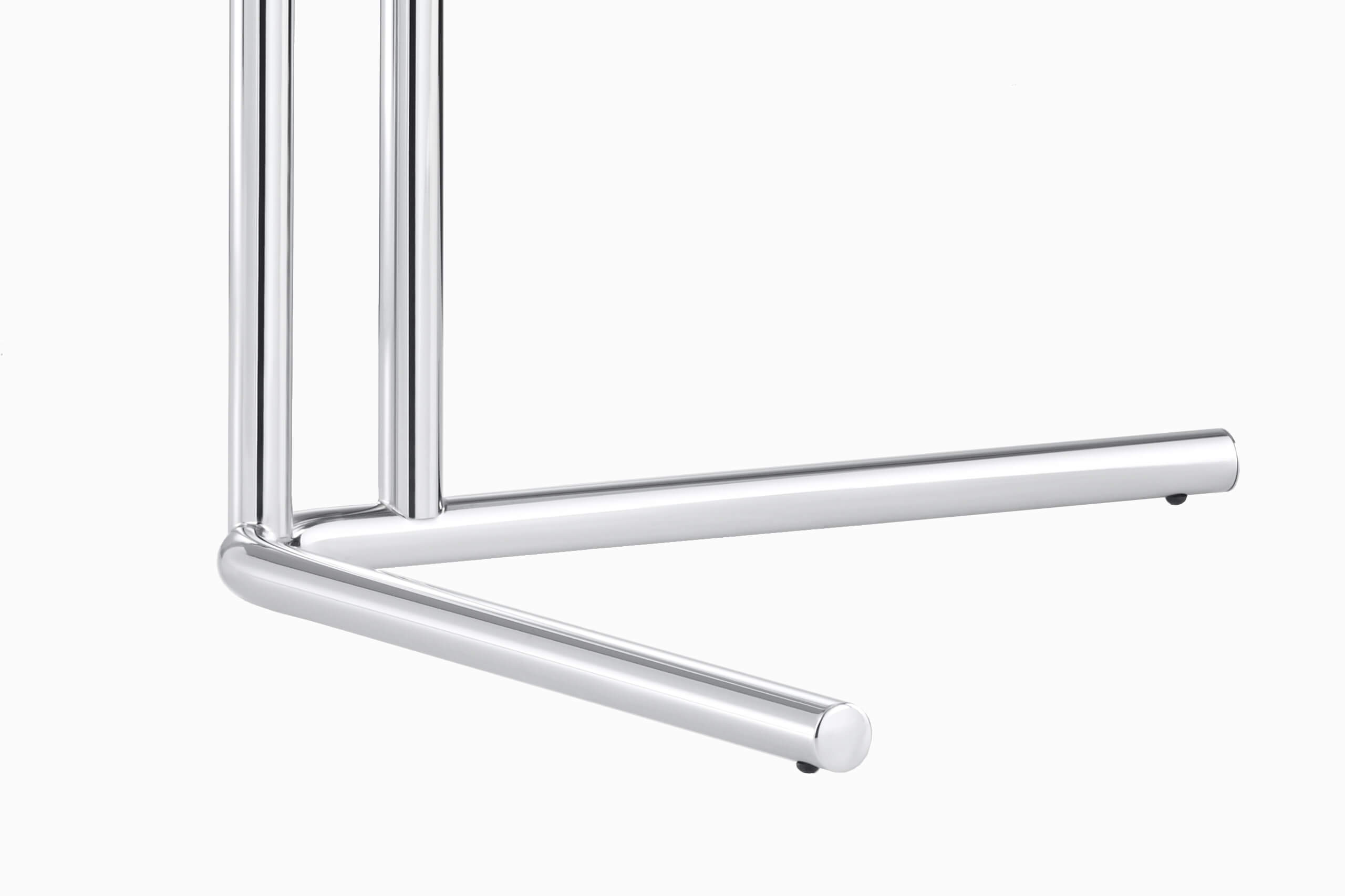»The machinery of the Person and the machinery of the Chair complement each other.«
With his statement of 1 May 1998, Peter Smithson reinterpreted a quote by artist friend Jackson Pollock (“The machinery of the Person and the machinery of the Activity complement each other”) and applied it to the kinetic chairs and armchairs by Tecta. In this way, he made it clear that the human body with its many joints and muscles is geared towards movement. Furniture should also follow these movements.
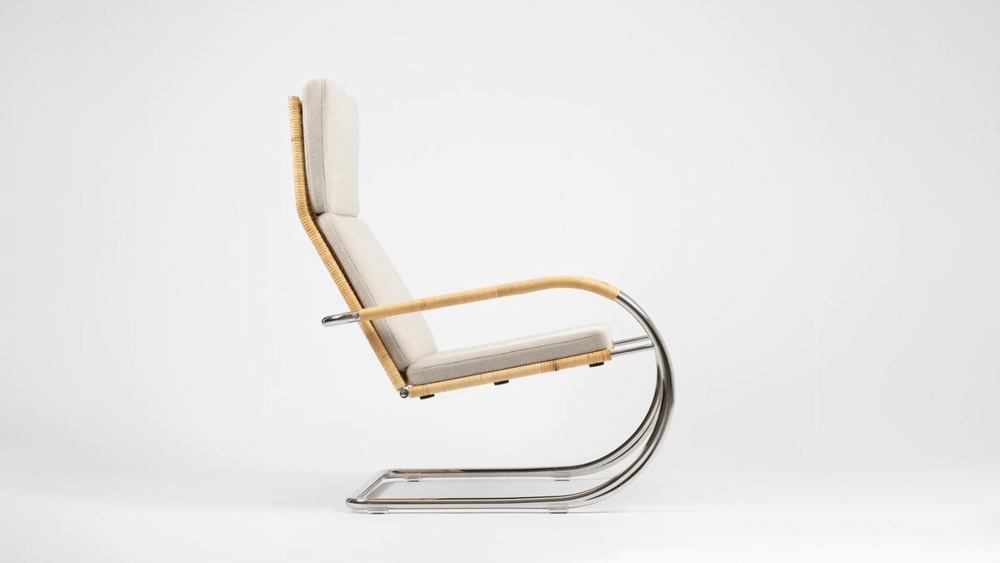
D35-1i
As early as 1928, Heinz Rasch called for a universal chair in his book “The Chair” that ” … follows the movements of the human body and yields to changes in posture”. The D35-1i is such a chair, or more precisely, such an armchair. The backless, slightly swinging basic form is based on the design of the famous B42 Weißenhof chair by Ludwig Mies van der Rohe. What makes the D35-1i unique, however, is the invisibly integrated air pressure spring, which allows the backrest to tilt continuously by gently shifting the upper body – from an upright sitting position to a relaxed reclining position. In this way, the D35-1i combines the lightness and elegance of traditional Bauhaus classics with precisely fitting kinetics for comfortable and exhilarating sitting. Marcel Breuer’s “dream of weightless sitting” comes within reach with this armchair.
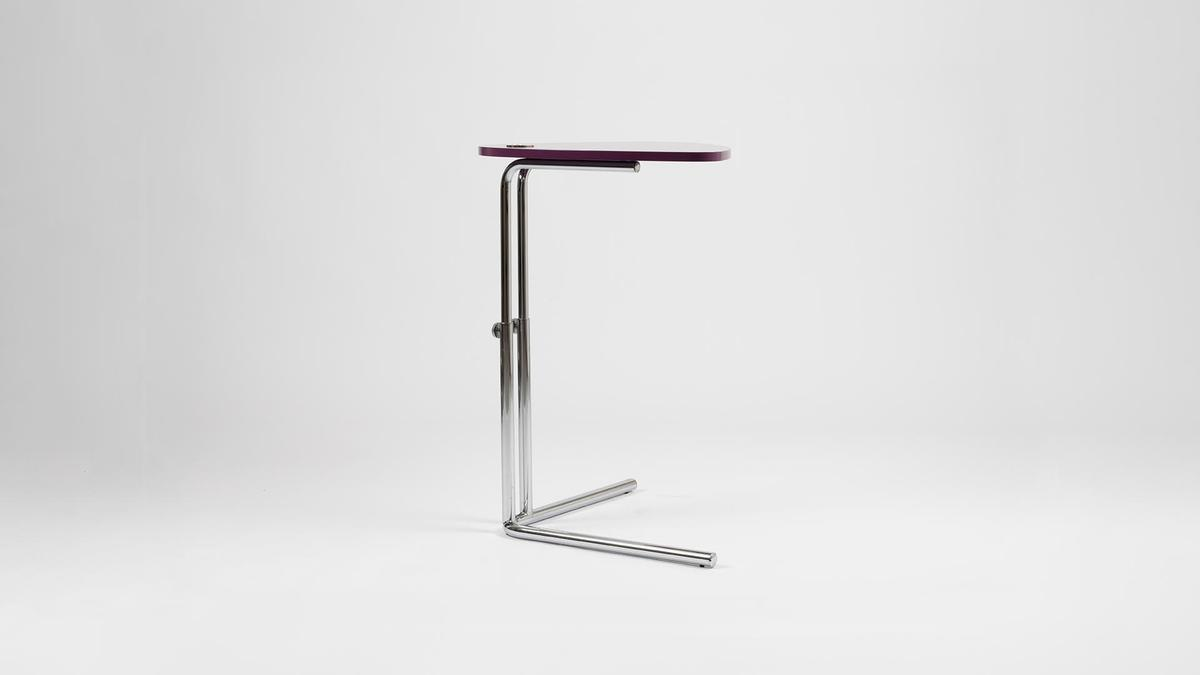
Up and down with the K22
The movement of the K22 is modelled on that of a trombone. The table top can be easily moved up and down with just one finger thanks to an integrated metal ring and can be fixed in place infinitely by means of the screw lock on the side. The height adjustment and the cantilevering of the rounded tabletop, which is modelled on the famous mobiles by the artist Alexander Calder, make the K22 so versatile.
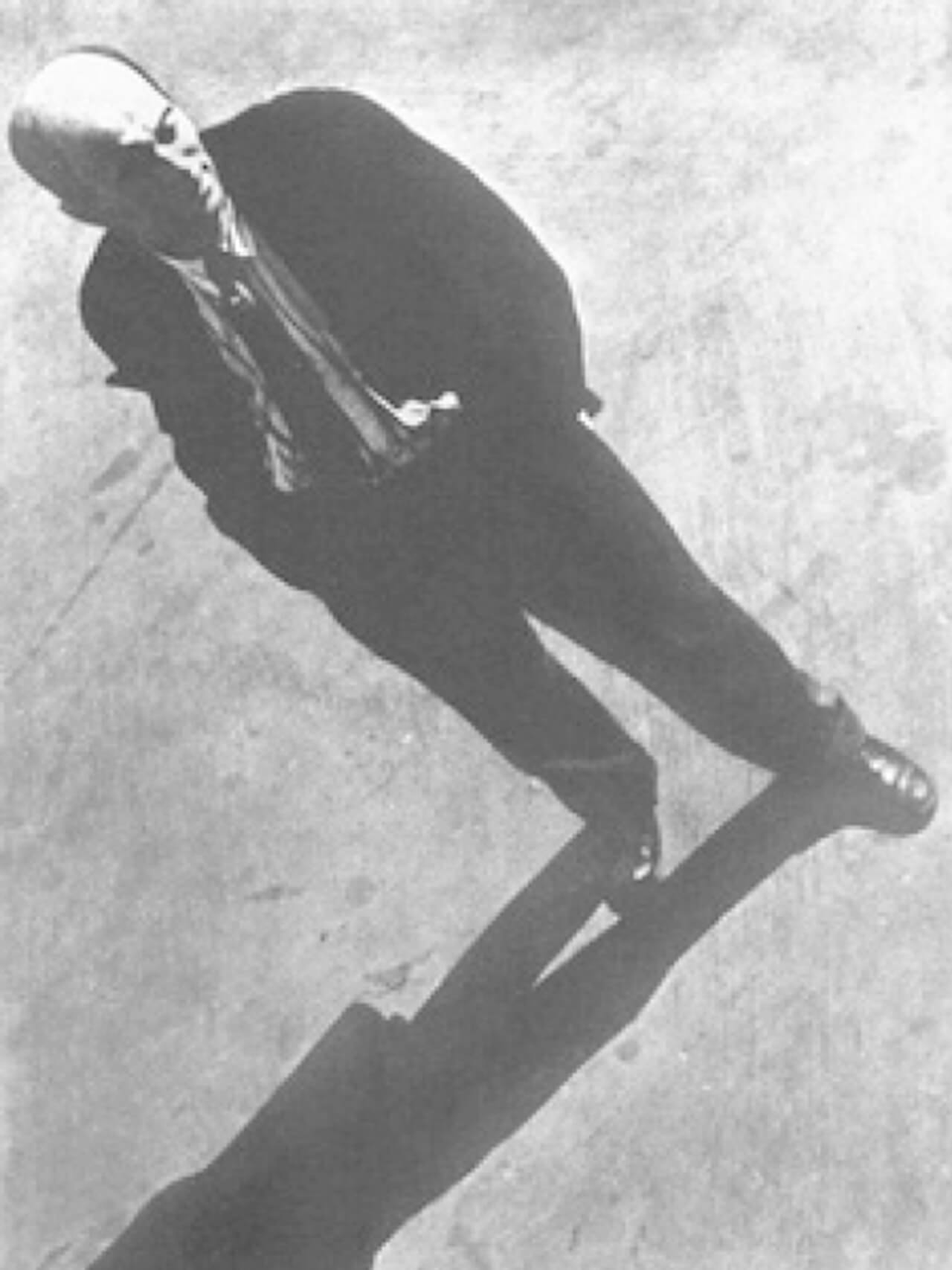
Or as El Lissitzky already stated 100 years ago:
“Our architecture rolls, floats, flies”

